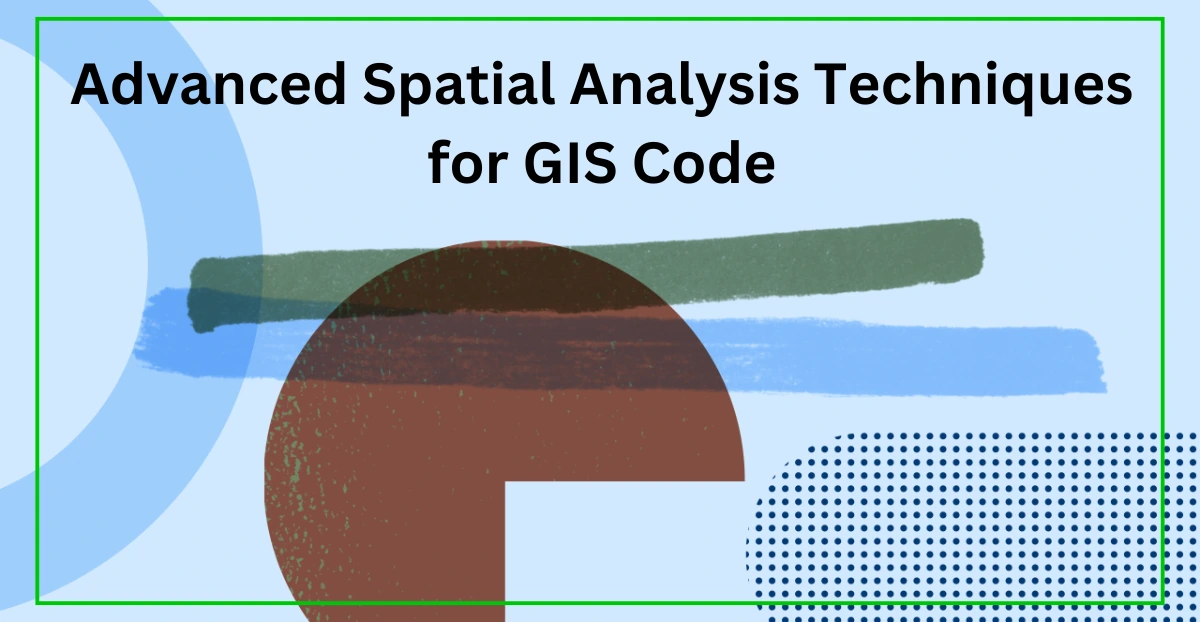Spatial analysis has become a vital tool across various industries, transforming the way we visualize, interpret, and make decisions based on geospatial data. For GIS professionals, mastering advanced spatial analysis techniques for GIS code can open doors to deeper insights and enhanced predictive capabilities. This blog will walk you through the top advanced spatial analysis techniques, demonstrate how they are implemented using code, and explore best practices for integrating these methods into your GIS projects.
Table of Contents
Toggle5 Advanced Spatial Analysis Techniques for GIS Code
1. Spatial Interpolation: Kriging
Spatial interpolation predicts unknown values at specific locations based on known sample points. One of the most advanced methods for this is Kriging, which considers spatial autocorrelation in the data.
Example (Python Code with GeoPandas and PyKrige):
import numpy as np
import geopandas as gpd
from pykrige.ok import OrdinaryKriging
# Load geospatial data
data = gpd.read_file(‘sample_points.shp’)
# Define coordinates and values
x = data[‘longitude’].values
y = data[‘latitude’].values
z = data[‘elevation’].values
# Perform Ordinary Kriging
OK = OrdinaryKriging(x, y, z, variogram_model=’linear’, verbose=False, enable_plotting=False)
z_pred, ss = OK.execute(‘grid’, np.linspace(min(x), max(x)), np.linspace(min(y), max(y)))
# Output the results
print(“Kriging Predicted Values:”, z_pred)
Use Case:
Kriging is commonly used in environmental monitoring, such as predicting soil properties or air quality across a region.
2. Hot Spot Analysis: Getis-Ord Gi Statistic*
Hot spot analysis identifies statistically significant clusters of high or low values within your data. The Getis-Ord Gi* statistic is a powerful technique for this type of analysis.
Example (Python Code with PySAL):
import pysal
import numpy as np
import geopandas as gpd
# Load geospatial data
gdf = gpd.read_file(‘crime_data.shp’)
# Calculate spatial weights
w = pysal.lib.weights.Queen.from_dataframe(gdf)
# Run Getis-Ord Gi* statistic
g_star = pysal.explore.esda.getisord.G_Local(gdf[‘crime_rate’], w)
# Add results to the DataFrame
gdf[‘hot_spot’] = g_star.Zs
# Output the results
print(“Hot Spot Analysis Completed:”, gdf[[‘geometry’, ‘hot_spot’]])
Use Case:
Hot spot analysis is often used in crime mapping to identify areas with high crime rates, helping law enforcement agencies allocate resources effectively.
Related Articles
3. Network Analysis for Route Optimization
Network analysis involves studying the connectivity and flow within a network, like road systems or utility networks. One advanced technique is using Dijkstra’s algorithm to find the shortest path between two points.
Example (Python Code with NetworkX):
import networkx as nx
# Create a directed graph
G = nx.read_shp(‘road_network.shp’)
# Define start and end nodes
start_node = (x_start, y_start)
end_node = (x_end, y_end)
# Find the shortest path using Dijkstra’s algorithm
shortest_path = nx.shortest_path(G, source=start_node, target=end_node, weight=’length’)
# Output the results
print(“Shortest Path Found:”, shortest_path)
Use Case:
Network analysis is essential in transportation planning and logistics to determine optimal delivery routes and reduce travel times.
4. Spatial Regression for Predictive Modeling
Spatial regression helps in understanding the relationship between a dependent variable and one or more independent variables while considering spatial dependencies. Geographically Weighted Regression (GWR) is a powerful technique in this category.
Example (Python Code with mgwr):
import geopandas as gpd
from mgwr.gwr import GWR
from mgwr.sel_bw import Sel_BW
# Load geospatial data
data = gpd.read_file(‘housing_data.shp’)
# Prepare variables for GWR
X = data[[‘income’, ‘population’]].values
y = data[‘house_price’].values
coords = list(zip(data[‘longitude’], data[‘latitude’]))
# Select bandwidth
bandwidth = Sel_BW(coords, y, X).search()
# Fit the GWR model
gwr_model = GWR(coords, y, X, bandwidth).fit()
# Output model summary
print(gwr_model.summary())
Use Case:
Spatial regression is used in real estate analysis to predict housing prices based on socioeconomic factors and their spatial distribution.
5. Viewshed Analysis for Line-of-Sight Modeling
Viewshed analysis determines the visible area from a specific point, considering the terrain. It is widely used in planning, such as determining the optimal location for a watchtower or telecommunications mast.
Example (Python Code with Rasterio and NumPy):
import rasterio
import numpy as np
# Load digital elevation model (DEM)
with rasterio.open(‘dem.tif’) as src:
dem = src.read(1)
transform = src.transform
# Define observer height and coordinates
observer_height = 10
observer_coords = (x_observer, y_observer)
# Perform viewshed analysis (simplified)
viewshed = np.where(dem > observer_height, 1, 0)
# Output the viewshed result
print(“Viewshed Analysis Completed:”, viewshed)
Use Case:
Viewshed analysis is critical in urban planning and military operations for evaluating visibility and line-of-sight scenarios.
Bonus Tips for Implementing Advanced Spatial Analysis Techniques
- Choose the Right Tool: Select software and libraries based on the specific analysis required. ArcGIS, QGIS, Python (GeoPandas, PySAL), and R are popular choices for different tasks.
- Data Quality Matters: Ensure your data is accurate, cleaned, and pre-processed before performing any advanced analysis to avoid misleading results.
- Stay Updated: Keep learning new techniques and tools as GIS technology is constantly evolving, and new methods are frequently introduced.
Conclusion
Mastering advanced spatial analysis techniques for GIS code can significantly enhance your ability to derive meaningful insights from geospatial data. Whether you’re dealing with predictive modeling, network analysis, or interpolation, these techniques can help you tackle complex projects and make informed decisions. Start incorporating these methods into your GIS workflow, and watch your analysis skills soar to the next level.
FAQ: Advanced Spatial Analysis Techniques for GIS Code
1. Can I perform advanced spatial analysis using Python?
Yes, Python offers several powerful libraries like GeoPandas, PySAL, and Rasterio for advanced spatial analysis.
2. What is the best software for advanced spatial analysis?
ArcGIS, QGIS, and open-source Python libraries are the most commonly used tools for advanced spatial analysis.
3. How can I ensure data accuracy in spatial analysis?
You can ensure data accuracy through data validation, using high-quality sources, and implementing robust quality control measures.
